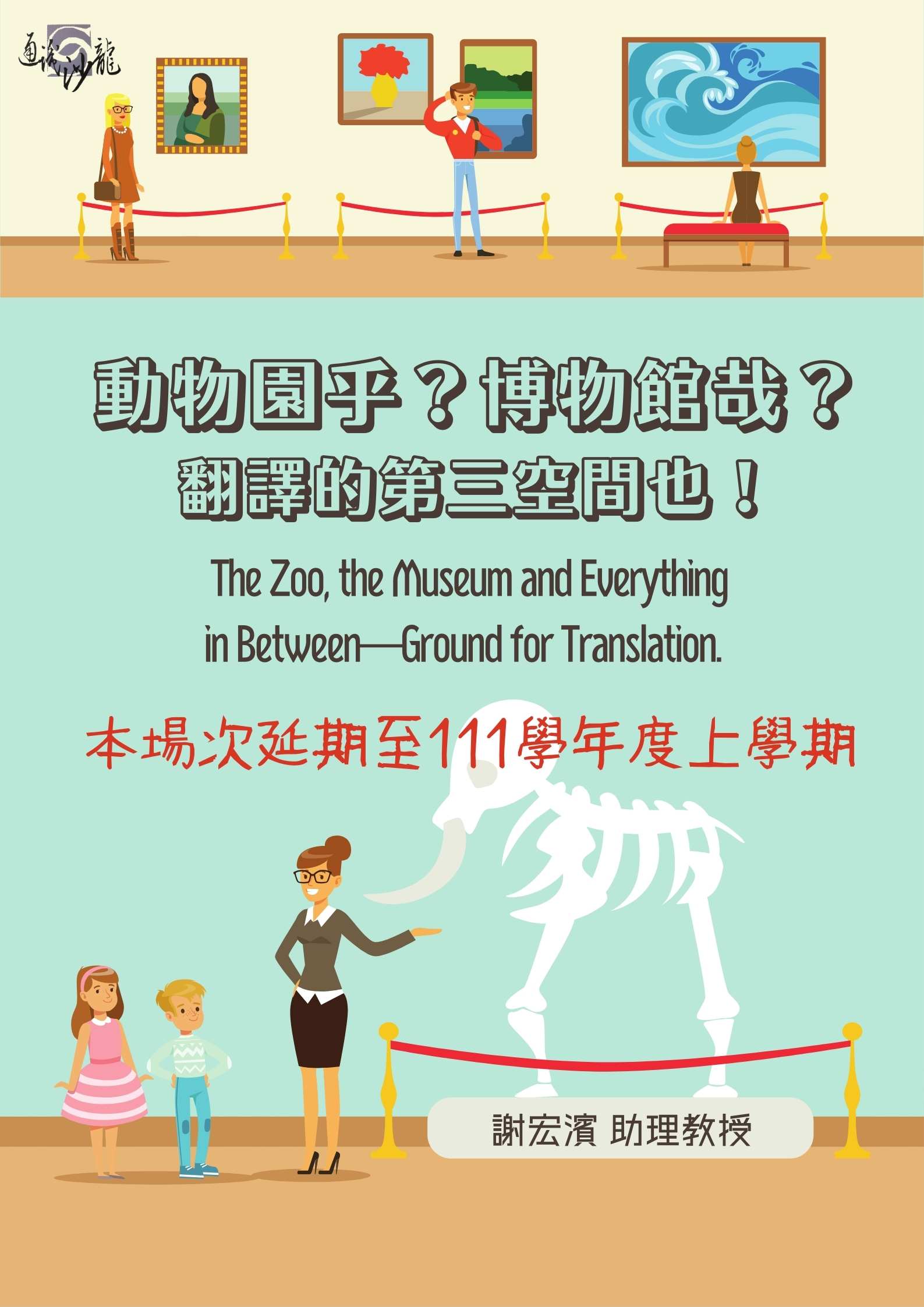


★因疫情延期辦理★【通識沙龍】動物園乎?博物館哉? 翻譯的第三空間也!
講 者:謝宏濱 助理教授
講座日期:原訂2022.05.05舉辦,本場次延期至111學年度上學期,活動日期將另行公告
演講地點:通識沙龍 (人言大樓十樓)
【內容簡介】
Zoos and museums are fun and interesting places. The first place most of us were taken to for fun and entertainment as a child was probably the zoo. Then once we were in grade school, one of the first places our teachers would take us to for a school trip would have been a museum, be it an art museum or a science museum. Most of us have been lifetime museum goers.
Then it begs the question: What do a zoo and a museum have in common? Well, quite a lot actually. A zoo is a place where animals are kept and put on display for the sake of entertainment, education and wildlife preservation. At the same time, a museum is a venue where artifacts and objects of historical and/or scientific value are put on display for general viewing. According to unofficial statistics, there are a total of more than 55000 museums worldwide, while there are roughly 10000 zoos (this includes aquariums and aviaries) attracting more than 500 million visitors annually. These figures seem to carry geopolitical significance with them.
Meanwhile, however, they both come with their respective controversies. As we know it, zoos are often slammed for their treatment of animals, whereas museums are constantly derided and reprimanded for the legitimacy and the provenance of their exhibits kept in their vaults. The controversies concerned, in my opinion, boil down to the dichotomy of human rights versus animal rights.
What is the main cause of these problems? I guess I have a theory. Over the years, I have noticed some museum/zoo signs that featured inadequate translation, which may have defeated the purpose of having the museum or zoo at all in the first place. It is my belief that the controversies that seemingly come with museums and zoos may be lessened—if not totally eliminated—if their signs and publications could be more sensibly translated.
相信一般人對動物園和博物館都不陌生。你我從上學開始,學校就以寓教於樂為出發點,經常安排博物館和動物園的校外教學,學童們也樂在其中。因此,把大家稱爲“遊園常客”似乎不爲過。
當今全世界共有約五萬餘座的各類博物館和一萬座的動物園(包含水族館和鳥園),而此數據是帶有地緣政治的意味。緊接著一個有趣的問題是,博物館與動物園有何共通之處?其實,若以展示展品供人觀賞的角度觀之,兩者之間是大同小異。兩者亦同時具有娛樂和教育普羅大衆的功能。其次,博物館和動物園都承受了無比的倫理與道德的責難。動物園承受著來自動物保護團體的壓力,而各界對各主要博物館的館藏的來歷與來路的撻伐,始終不曾間斷過。
這一切為哪般?個人認爲,牌示以及牌示中的翻譯可能是禍因之一。面對巨大的道德非難,博物館和動物園對將園區内的牌示,特別是牌示的設計與牌示,重新予以整頓實在責無旁貸。如此一來,我們方能夠還給博物館和動物園其應有的社會地位,讓它發揮其應有的功能。
【講者簡介】
人文社會學院助理教授

Share: